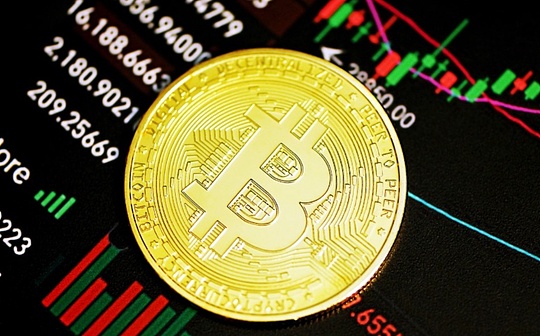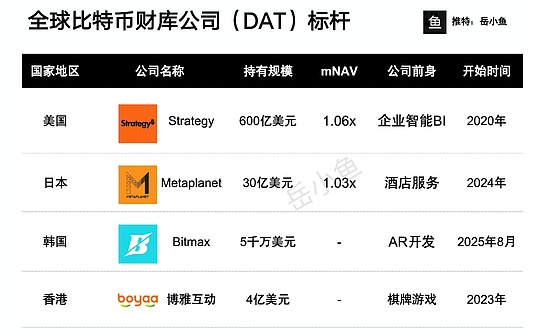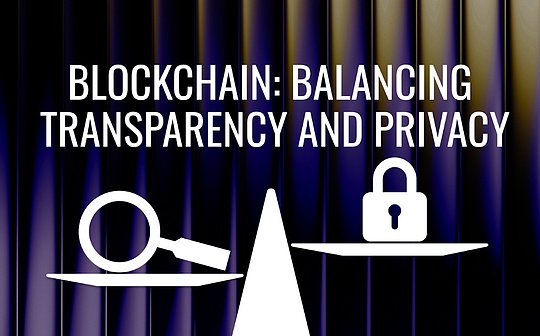
Compiled by: Bitchain Vision
The TOKEN 2049 Singapore Station event was held today.Goldman Sachs partner Timothy Moe and well-known analyst and Ex Uno Plures CEO Zoltan Pozsar delivered a keynote speech entitled “Macroeconomics and Cryptocurrency” at the event.The speech states thatThe global economic system is accelerating its decentralization direction.US policy prompted its economic role to reverse, from a traditional “consumption center” to a “production center”, a process that shakes the old economic order dominated by the US dollar.Talking about the current major economic risks, they said that Europe lacked investment in infrastructure and defense, and was deeply in short-term difficulties due to the influence of US interest rate policies; Japan and South Korea were impacted by the US high interest rates and trade bundling strategies, the economy was running difficult, and the pressure on the currency and asset markets doubled; emerging markets were plagued by high inflation and depreciation of their local currency for a long time, and faced the risk of capital outflows.In this context,Although the US dollar is supported in the short term due to allies sharing costs and expanding usage scenarios for stablecoins, its position may be shaken in the long run..In terms of investment advice, Pozsar emphasizesGold is still the first choice for safe-haven assets, and the market’s trust crisis in fiat currency has intensified, driving the strong price of gold.He also pointed out thatBitcoin has certain savings substitution attributes, but its price fluctuates violently and is greatly affected by regulation.;U.S. Treasury bonds are stable in the short term due to stable policy support demand, so we need to be wary of risks caused by the decline in purchasing intentions of allies in the long term.
The following is the full text of the speech.
Good afternoon everyone.We are all very excited to be here, and this conference focuses on the cryptocurrency field, which is actually in a larger area.We try to explore it in depth and sort out the inner connections.I hope that through such discussions, we can gain something, so as to understand this field more comprehensively and in-depth, and provide reference for your research and thinking in the field of encryption.Next we officially get to the topic.
Nowadays, people are also talking about the US exceptionalism and the US dollar, and of course, we will discuss this issue in more detail later.But perhaps we can examine how the United States, especially monetary and fiscal policies, influence this narrative of “American exceptionalism”.
I thinkThe fundamentals of the U.S. economy are improving.First, let’s talk about a move by the Trump administration.The Trump administration has opened up a new source of fiscal revenue – tariffs.This involves matters related to a sovereign wealth fund whose operations are expected to bring in considerable revenue.It is worth noting that the funds of this sovereign wealth fund are mainly provided by the Japanese side.Other countries such as South Korea are also involved.In other words, the funding source of this fund involves investment from other countries.
From a technical point of view, we need to change the nature of capital flows so that it is not just a passive capital to make up for the deficit, and is used to support activities such as private equity, debt repurchase, stock repurchase, and dividend distribution.Instead, it transforms into a form of capital gains that can effectively strengthen the U.S. industrial base and hopefully change its economic growth trajectory.To sum up, compared with the growth output driven by artificial intelligence, this capital flow model has more outstanding performance and broader prospects, which deserves our in-depth attention and research.
So, in terms of the fundamentals of the treasury bond market, has the current situation improved significantly compared with January this year?I think keen investors have gradually realized that the focus of the current discussion is no longer limited to questions such as “who will provide financial support for the fiscal deficit” and “who will buy government bonds”.After all, there was a previous view that Treasury bond yields would climb to 6%, and the market situation once seemed extremely complicated.This is the trend shown in the field of treasury bond trading.Obviously, the government has developed a well-considered policy plan and is working to promote its implementation globally.
There is a point to point out,I tend to see the United States and its allies as a “Western Union” that corresponds to the Eastern Union.Under such a consortium framework, role positioning is undergoing a significant change..Traditionally, the Western consortium has always shown a pattern of consumption with the United States as the core and neighboring countries assume production functions.And at the moment, this situation is turning around.
Therefore, the United States will gradually transform into a production center, and although neighboring countries will not become consumption centers in the absolute sense, the development trend has obviously tilted in this direction.It is worth noting that there are many ways to sort out and regulate these economic phenomena.For example, FDI from allies is undoubtedly an important expenditure in economic activities.In addition, if 5% of GDP can be invested in infrastructure construction and defense, the impact of this fund allocation method will be very far-reaching and will never be covered by a simple analysis or two.In fact, this trend has been developing for many years and will continue for a long time in the future.It can be seen that the impact of these changes on the overall economic pattern cannot be underestimated.
I want to explain this to all the listeners.At present, there is a view that, for example, refers to China’s ability in the manufacturing field, and believes that China’s development has had an impact on related industries in the United States, such as this statement.Sometimes the opinions you express seem to be a response to such views to some extent.
In delving into the roots of the current dilemma, it is necessary to go back to the 1930s.During that period, the United States was undoubtedly at the core of global production.At that time, some policies implemented by the United States were essentially neocolonial.At first, the United States only launched a limited tariff counterattack against other countries’ tariffs.Originally, these measures seemed to have little impact, but due to the long-term serious imbalance of the US trade account, the United States eventually fell into the quagmire of the Great Depression.
In the global industrial production field, if measured by profit share, the United States accounted for a very high proportion at that time.If we want to explore today’s economies with similar characteristics, it is undoubtedly China.It can be seen that when the United States introduces a series of unreasonable policy measures, although some Chinese export products will indeed be impacted, from an overall perspective, the negative impact of these shocks on China is far greater than the impact on the United States itself.It is true that key industries such as rare earths have a special position in the international trade pattern, but the United States has not set up trade barriers for these areas at present.However, judging from the actual economic problems of the United States itself, does this stem from some root cause?
We should realize that, for China, the current export situation is hard to compare with the past.A series of strategies implemented by the United States aim to put China in a relatively disadvantageous situation.At the same time, the United States has also prompted its allies to take a series of policy measures against China, mainly reflected in three aspects.For example, the so-called “North American Fortress” program has caused Canada and Mexico to impose tariffs on Chinese products.Chinese food companies clearly feel the pressure brought by this series of measures in the United States.However, although the US move will have a certain impact on China’s exports, from another perspective, after the United States builds trade barriers, other countries will inevitably import more from China in order to meet their own needs.
Therefore, these countries are also facing corresponding situations.As discussed earlier, China will take certain measures.The stronger the trade protectionist measures implemented by the United States, the more it involves game theory issues.What I call game theory, this theory, still plays a role in the current trade situation.It is worth noting that the current international economic structure can have a unique impact.
Next, let’s connect this topic to the field you are studying, which will give us more inspiration to our discussion.After that, let’s analyze monetary factors, such as interest rate changes and the impact of current government related policies on them.How do you view the changing trends of the cycle under the current economic environment?We might as well start with recent economic data. The yield at the end of the current curve has declined, which indicates that some changes have occurred in the economic situation.Looking back a year or two ago, the economic environment was still in a state of tension, nowThe investment strategies of banks and central banks have also changed, and they no longer carry out large-scale repurchases as before., this reflects that the current economic environment has undergone significant changes.
It is worth noting thatThe recent rate cut rate exceeded expectations, and the depth and speed of market volatility exceeded expectations, which fully demonstrates that the impact of market expectations on the economy is rapidly emerging..Against this background, the Fed’s decision-making trend has attracted much attention.The current Fed’s policies seem to be more inclined to look back on the past, lack consideration of future economic risks, and lack forward-looking judgments on future trends.This situation will obviously have an impact on the selection of Federal Reserve Chairman and policy-making process.
With the widespread application of computer technology in various fields, although productivity has been improved, it also faces new challenges and opportunities. This complex economic phenomenon is worthy of our in-depth study.
Therefore, artificial intelligence is of great significance in this field.It can significantly improve the level of productivity, and in this process, it will have an alternative effect on white-collar jobs and will also affect related industries.Blue-collar jobs were already facing severe loss in the 1990s and early 21st century.This phenomenon reflects a major change in the employment structure and can be regarded as a true reversal of fate.
In view of this, we must focus on future developments, because the widespread application of artificial intelligence will bring deflationary pressure to a certain extent.At the same time, from a current and future perspective, one of the key factors in the deficit problem facing the United States is the interest rate level.People often ignore the concept of basic deficit, which refers to the deficit part after excluding interest expenses, accounting for only 2% of nominal GDP.Interest expenses account for as much as half of the deficit.If a series of targeted measures are taken, many related problems are expected to be alleviated.
In addition, if you study the details of the US-Japan investment agreement in depth, you will find that the reference rate for Japan to provide loans to US shipyards and chip manufacturing fields is currently set to a 6-month period.Acquisition of funds at lower interest rates is more beneficial for investment.Various factors have prompted us to respond quickly to related issues, which also reflects the comprehensive considerations made by the Federal Reserve from a macroeconomic perspective.
Overall, we need to explore practical solutions to help economic entities enjoy policy benefits faster and achieve effective interest rate cuts.I think this is a very professional and technical topic.Even if appointing a Fed chairman with the most outstanding communication, it may only improve slightly from the overall economic situation, because the complexity and multifaceted nature of the economic system determine that changes are not achieved overnight.
So I think that perhaps some governments need to collaborate on a series of related matters, of course, this is another topic to be discussed in depth.Back to the point, the current situation is to either respond actively or allow the global credit system to decline.Here, I hope you can combine this status quo with the various information we have, and then conduct research and analysis of a series of related products.
Obviously, if restrictions are drastically reduced and this situation is not common in other regions, then this impact may affect related industries and gradually spread.This is also one of the important factors that lead to regional tensions and intensifying conflict risks, and may also put downward pressure on market prices.This does not mean that we expect to see a certain power structure formed, but in fact, this is not the situation we hope to happen.
This is indeed a major issue worthy of attention.In today’s era, it is difficult for all parties to gather together to discuss and determine a reasonable market level.From a macroeconomic perspective, narrowing the interest rate spread between the United States and other countries may be a viable solution.It should be pointed out thatThe United States has certain advantages in fiscal fundamentals, and its policy direction has an important impact on the trend of the interest rate curve..
In Europe, it plans to spend 5% of GDP on infrastructure and defense spending.However, whether this measure can effectively improve industrial production capacity and promote sustainable economic development remains to be further observed.To some extent, there are many uncertainties in the actual effect of this decision.
Taking the interest rate curve as an example, if the curve is too steep, it may cause interest rate adjustments to fall into trouble, thereby keeping interest rates at a high level.At present, the United States is actively promoting Japan to normalize interest rates, prompting its interest rate curve to return to a reasonable range.China is also facing similar and complex economic situations and policy challenges to a certain extent.If this situation continues, it will undoubtedly have many adverse effects on the global economy.
Therefore, this is not about the agreement itself, but the discussion around a view that the US dollar may continue a certain trend.Next, we link this to the macroeconomic situation.Obviously, the performance of the gold market this year is quite eye-catching.We might as well think about fiat currencies, gold and cryptocurrencies in a broader economic context.
First of all, it is necessary to clarify some key points.If there is a certain established factor, it will continue to play a role and drive the relevant economic indicators to rise.This does not mean a dazzling growth trend, but develops in a relatively stable and global impact.For us, the key is that economic fundamentals are gradually improving.In the future, we are expected to build a hybrid system where multiple forms of currency coexist.
Since 2022, the gold market has attracted much attention.At different stages, its price fluctuations are driven by a variety of factors.on the one hand,Central banks in other countries around the world continue to accumulate gold reserves steadily, as if fulfilling a firm commitment; on the other hand,Geopolitical tensions raise concerns about terrorism, will also have an impact on the gold market.also,From the physical transaction level to the development of the cryptocurrency field, all of them have brought new changes to the gold market..At present, the direction of the gold market value we observe is not simply determined by the information conveyed by the media.In fact, we are trying to explore the deep logic behind it, trying to restore the market phenomenon to its due economic logic framework.This view has been widely recognized in academic discussions.
At the same time, the economic development process has experienced a high degree of inequality in history.This phenomenon is reflected in donation behavior and information dissemination, but this is not the core content of our discussion this time.Behind many economic phenomena, there is a factor of distrust among market participants.In economic activities, the concept of “wealth is resources” still exists.Many people encounter some shocking opportunities and challenges at specific stages of economic activities, and when we analyze these phenomena, we need to use complex data analysis tools.Because some economic factors have too profound impact on the US economy, they limit the development space of the United States in other aspects and also affect the economic decisions of other countries.All these independent economic phenomena form part of our study.
This can be seen as a report on economic drivers.In my opinion, the world economic landscape today is taking a unique state, and the decisions and suggestions of British companies in some aspects have had a significant impact on the global economy.This phenomenon is more special in the economic field, and the relevant trade dynamics are also very subtle.The United States focuses on maintaining the stability of the US dollar in economic policy formulation and makes full use of the flexibility of the economic system to obtain benefits.andCryptocurrencies occupy a unique position in the entire economic system, just like they are in the core area.Bitcoin has certain savings substitution attributes, but its price fluctuates violently and is greatly affected by regulation..In recent years, the trend of gold investment has undergone some changes, which is closely related to the development of resource markets and digital gold.It can be said that these different economic elements are gradually integrating with each other.However, how to find the best balance between these complex economic elements is still a question worthy of in-depth research, which may vary depending on the individual’s research perspective and analysis methods.
From the perspective of relative GDP, if we want to solve some problems in the current economy, such as economic imbalance, we need to comprehensively consider various factors in the same economic environment and try to find solutions.This involves both the micro level such as marketing strategies and macro level such as economic policies.Alternatively, we can try to adjust economic policies according to a specific idea, such as achieving economic fairness by reasonably controlling the issuance of currency.This means that a stable value anchor is needed, an open and transparent institutional framework is established, so that all kinds of currencies play different roles in the economic system, while ensuring sufficient money supply to support infrastructure development in various countries.When we regulate these factors, economic phenomena will change accordingly, and we need to conduct in-depth analysis and explanation of this.
It can be said that without in-depth research and understanding of these factors, it is difficult for us to fully grasp the laws of economic operation.In this regard, the United States is more fortunate to have the current leadership team.The administration under President Trump maintains a relatively consistent direction in economic decision-making.Finance Minister Bescent plays an important role in the administration and he has in-depth thinking on how to deal with current economic problems.For example, in the face of economic hardship, there are usually two policy options: cut benefits or increase taxes.The U.S. government is trying to implement relevant policies at the enterprise level.One of the measures is to impose tariffs on exports, while NATO countries spend 5% of their GDP on defense spending, which is a priority welfare program before social security in the European economic system.In the international political and economic landscape, all countries hope to ensure their own security.If countries do their best to deal with the problem within their capacity and the results are good, there is no need to seek external assistance.
By passing some of the costs on trade surpluses, the United States can not only obtain export revenue and reduce its own expenses, but also guide these surpluses to invest in services and manufacturing in the United States, rather than developing a net export sector in its own country.Although this strategy is complex and has some uncertainty, it may have a positive impact on U.S. economic growth, tax revenue, and job market in the long run.Take the current U.S. fiscal deficit, which is currently around 6%, is expected to decline in the near future.If interest rates are 100 basis points lower than nominal economic growth, economic indicators will change, but the decline in deficits does not depend solely on this factor.This adjustment process is relatively moderate and will not cause excessive pain to the economy.
Furthermore, from an investment perspective, any investor with a portfolio expects assets to bring stable returns.Because if the portfolio only contains value-added assets, investors have to sell the assets when they need to allocate funds or respond to emergencies.While investors can optimize decisions by learning investment knowledge, returns may only come from limited coupons.andAs a traditional asset, gold will not bring fixed and considerable returns, but it always occupies an important position in the investment portfolio due to its stability and hedging attributes..
To sum up, this is the current economic situation in the United States.In contrast, countries such as France, Japan and South Korea may face more severe challenges in similar changes in the global economic environment.What is the specific situation?Next, let us temporarily turn our attention to monetary testing. In this way, we can further connect various economic elements and look forward to future world economic development trends.Under the influence of rapidly changing economic forces, the stability points in the economic system are also constantly adjusting.Faced with future changes in the monetary system, governments and private sectors need to make corresponding decisions and may need to abandon some traditional practices to adapt to the new economic situation.
So I think from the national perspective, the public-private cooperation model is undoubtedly of great significance.The current problem is how to view the challenges faced by this model in actual operation.As far as I am concerned, my focus has always been on the areas related to safety products.Any scholar who has in-depth research on currency history knows that the issuance and circulation of currency is either aimed at the general public or rely on the collaboration of partners.In the current situation, although we can understand the existence of certain phenomena, we must admit that practical actions are still lagging behind in promoting relevant reforms and development.
I firmly believe that the current monetary system has certain advantages compared to the traditional centralized monetary system.Looking at it from the international and domestic dimensions, this system is expected to improve the operating efficiency of the banking system.As a form of currency creation, its impact on the economy cannot be ignored.However, there are still many things that need to be improved in this system, and all parties need to further study and explore in depth.This actually constitutes a completely new economic correlation model, which from a macroeconomic perspective is very likely to bring about major changes to the existing economic pattern.
Here, I would like to mention a phenomenon, namely, economic dynamics from Africa.You might as well think about whether these new situations will have an impact on the transmission mechanism of the global economy?To what extent will it affect the economic relations between countries?From the perspective of the evolution of the global economic landscape, we have been under the US dollar-dominated system for a long time, and this system shows the characteristics of highly concentrated resources at the top.Take China as an example. When China exports goods to the United States and obtains US dollars, it usually needs to hand over the US dollar to its central bank and then convert it into its own currency.This process has led to a large concentration of the US dollar at the national level, forming a special economic phenomenon.
This system exposed some problems during operation.For many countries, especially those that have geopolitical differences with the United States, their attitudes and participation in the dollar system are changing.Behind this phenomenon is complex geopolitical and economic interest considerations, and the United States has gained many advantages in the global economy with its unique position as the dollar system.
We can understand the concept of “stablecoin” in the US dollar system in this way.Suppose some countries (such as emerging countries such as China) reduce their purchases of US Treasury bonds based on their own economic development strategies and risk considerations.The reasons behind this decision may be diverse, perhaps because of the awareness of potential risks, or because of the need to optimize your own asset allocation.In this case, the US financial system will inevitably be affected.So, how to find a new “stablecoin” in this changing environment?This requires all parties to re-examine and adjust their own economic strategies.
In daily economic activities, people face many currency choices and transaction problems.For example, when spending with a credit card, the settlement currency of a credit card (such as a U.S. credit card) will have an important impact on the transaction.During the transaction process, cardholders may decide whether to convert funds into US dollars based on their own economic conditions and market conditions.If the use of stablecoins can provide a more convenient and economical payment method, in some cases people may tend to trade with stablecoins..This seemingly simple daily trading behavior actually reflects the micro-level operation of the global monetary system and the interaction between different currencies.
This phenomenon is reflected in many countries and regions around the world.The United States has created a new capital operation model to provide financial support to various digital currencies (such as USDT, USDC, etc.).Ordinary investors may not realize that their behavior has provided support to the U.S. government’s debt financing to a certain extent.Looking back two or three years ago, the United States faced debt financing difficulties, and now the adjustments to the investment strategies of China and other countries in the United States will undoubtedly have a chain reaction to the global economic landscape.
Today, many countries face similar difficulties in economies.When people swipe their cards for daily consumption, what they accumulate is not local currency deposits, but US dollars.This phenomenon not only affects the circulation of local currency and the stability of the financial system, but also further deepens the local economy’s dependence on the US dollar.This situation will help the United States consolidate its dominance in the global economy, but for other countries, it brings many challenges and risks.
To sum up, I think this economic strategy of the United States has shown extremely high wisdom, but it has also triggered profound changes in the global economic landscape.In the long run, we need to focus on two key factors.First,The value fluctuations of the US dollar are cyclical.Although the US dollar has not experienced a significant downward cycle in the past period of time, with the changes in the global economic situation and the adjustment of economic policies of various countries, cyclical fluctuations in the value of the US dollar are inevitable.Second,The development trend of the US dollar network cannot be ignored.During the last administration, despite the strong exchange rate level of the US dollar, its influence in the global economic network has gradually been eroded on the edge.This is mainly reflected in the fact that more and more countries are beginning to use their own currencies for trade settlement and actively promoting the development of central bank digital currency (CBDC) projects.Faced with this situation, the US government has taken a series of measures to counteract, aiming to maintain the global dominance of the US dollar.
Under the current government’s leadership, we can foresee that the dollar network is expected to expand further, although the dollar may face some degree of depreciation pressure.In the financial market, this seemingly contradictory phenomenon actually reflects the complexity and dynamics of the global economic landscape.Finally, let’s look at a set of data. The current 5-year Treasury yield is 13%, the 12-year Treasury yield is 10%, and the 2.5-year Treasury yield is 4.15%, and the US dollar index (DXY) is about 98.These data provide us with an important reference for further analyzing the global economic situation.That’s the case.
Then, that’s the end of this discussion.goodbye!







